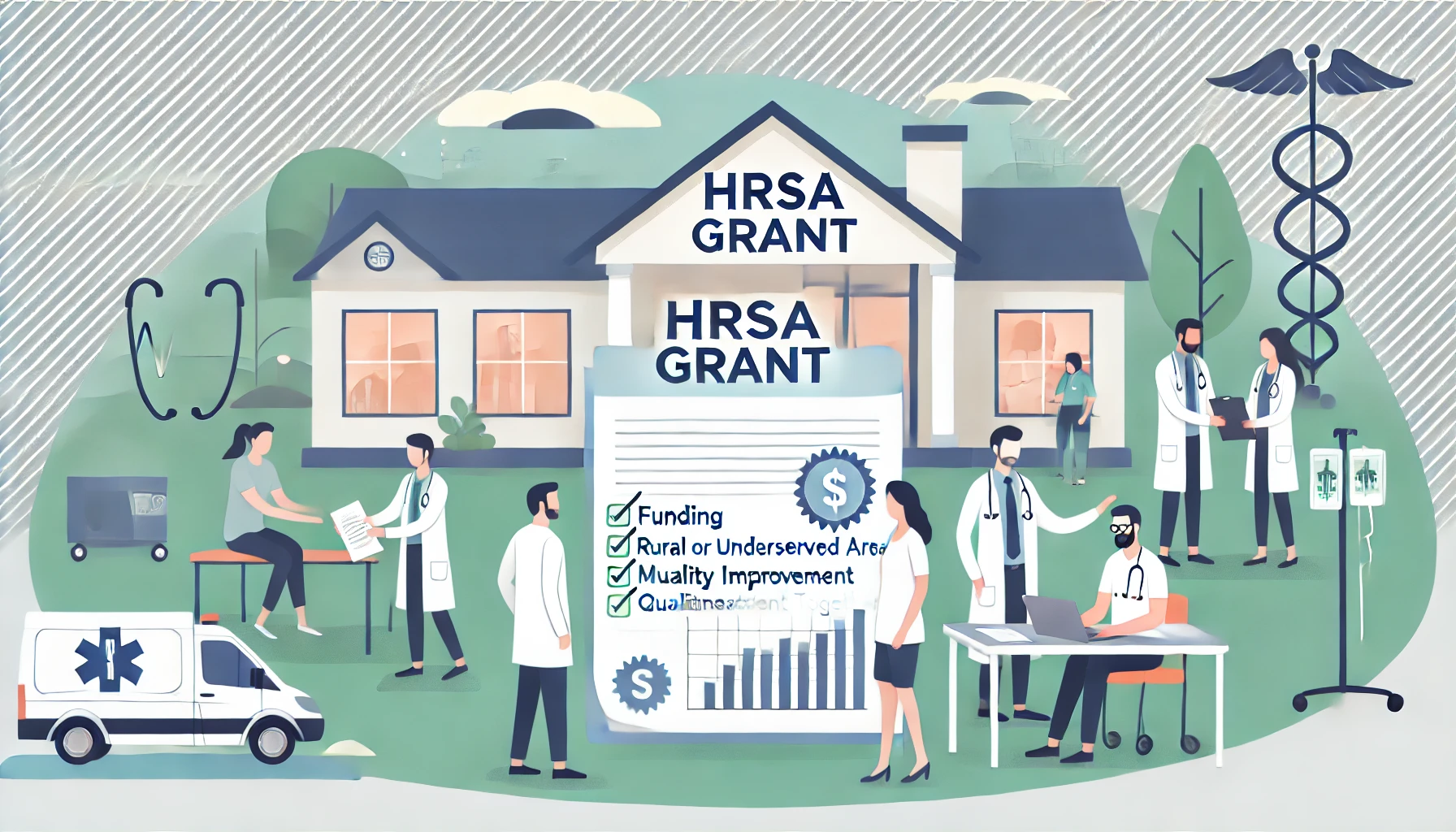
Table of Contents

New Funding Opportunities for Rural Health Initiatives
HRSA unveils new grants to boost rural healthcare through telemedicine, mental health, and infrastructure, aiming to reduce disparities and improve access.
New Funding Opportunities for Rural Health Initiatives
The landscape of healthcare in rural areas is undergoing a potential transformation, thanks to new grant opportunities unveiled by the Health Resources and Services Administration (HRSA). In a recent announcement, highlighted in an article by MyKXLG (read the original article here), HRSA has expanded its funding to support rural health programs and community-focused projects. These initiatives aim to strengthen healthcare delivery, improve accessibility, and promote innovation in underserved areas.
While these grants present a promising opportunity for rural communities, they also bring forward some critical questions about the sustainability and reach of such programs. Let’s dive deeper into the notable highlights of this initiative and explore the broader implications of funding in rural healthcare.
Expanding Access Through Strategic Funding
Rural communities in the United States often face significant barriers to receiving quality healthcare. Factors such as geographic isolation, limited infrastructure, and personnel shortages have made healthcare inequity a pressing issue in these regions. Recognizing these challenges, HRSA’s new grants are designed to address gaps in service provision, particularly through projects that enhance telemedicine, behavioral health programs, rural hospitals, and community-focused health networks.
According to the article, key opportunities within the funding package include:
- Telehealth Support: Grants to boost telemedicine access in rural areas where in-person care may be impractical due to distance or lack of facilities.
- Behavioral Health and Substance Use Programs: Funding for mental health services and programs addressing the opioid crisis, a growing concern in rural America.
- Infrastructure Development: Investments in strengthening rural hospitals and creating healthcare hubs that can serve widespread populations.
In a statement quoted from the original article, an HRSA representative noted the overarching goal of these grants: “This funding opportunity underscores our commitment to ensuring equitable healthcare delivery for all, regardless of location.” By redirecting resources to address inequities, HRSA aims to reduce the disparities observed between urban and rural populations.
Exploring the Prospects
There’s no doubt that additional funding can bolster rural healthcare systems. However, the effectiveness of these grants rests on several critical factors:
1. Addressing Workforce Shortages
One of the greatest obstacles facing rural healthcare facilities is a severe shortage of qualified medical professionals. While investing in infrastructure and technology is imperative, these resources are only as effective as the availability of trained personnel. Grants targeting telehealth solutions, for instance, could succeed in improving access to care, but without rural-based physicians, nurses, or technicians to operate and utilize these technologies, tangible improvements may be limited.
2. Long-Term Sustainability
Another concern lies in the issue of sustainability. While initial funding can launch beneficial projects, the ongoing management and maintenance of these initiatives often require consistent financial and operational resources. For rural communities where local economies may struggle, keeping these programs active without ongoing support is a significant hurdle. Will these grants provide the seeds for long-term change, or could this initiative merely serve as a short-lived band-aid?
3. Equity in Allocation
Rural communities vary widely in terms of size, needs, and existing resources. Many of the intended target areas may face challenges unique to their location. This raises questions about how funding will be allocated and whether smaller, less-visible communities will receive a fair share. One potential pitfall could be larger rural hubs monopolizing resources while smaller, remote regions remain underserved—further perpetuating inequities.
Potential Benefits of Rural Health Grants
On the other hand, if implemented effectively and equitably, HRSA’s initiative could mark a major step forward in addressing long-standing public health disparities. Several benefits could emerge, including:
- Increased Access to Care: Telemedicine could finally bring healthcare to rural residents who were previously forced to drive long distances or forgo care altogether.
- Improved Behavioral Health Support: With more funding directed toward mental health programs, rural communities could see greater resources dedicated to combating depression, anxiety, and substance abuse.
- Building Community Health Networks: Strengthening local healthcare hubs encourages collaboration and fosters trust in the system, which has often wavered in underserved populations.
As the article points out, fostering confidence in rural healthcare systems might encourage professionals to work in these areas, ultimately leading to a more even distribution of healthcare talent nationwide. Directly quoting from MyKXLG’s coverage: “By investing in infrastructure and fostering collaboration, we’re creating a future where health disparities are no longer a status quo.”
Skepticism and Alternative Views
Although the potential benefits of the HRSA grants are significant, it’s essential to remain realistic about the barriers that rural health programs continue to face despite increased funding. Some alternative viewpoints worth considering include:
- Are telehealth programs truly impactful in areas with minimal broadband and internet access, a common issue in remote rural regions?
- Might focusing on upgrading existing infrastructure unintentionally prioritize facilities that are already functional over those that are in dire need of basic resources?
- How does temporary grant funding address systemic factors underlying healthcare inequity, such as poverty and education disparities?
These are essential questions for policymakers, stakeholders, and the public to consider as these rural health initiatives roll out. The road to genuine equity in healthcare is a long and multifaceted one, requiring more than just financial investment—it demands a collaborative, holistic approach.
Conclusion: A Step in the Right Direction?
The new funding opportunities from HRSA represent a much-needed focus on rural health that acknowledges the troubling disparities faced by millions of Americans in remote areas. While the intentions behind these initiatives are undeniably positive and well-meaning, their ultimate impact will hinge on execution, equity, and sustainability. It remains to be seen whether these grants catalyze lasting systemic change or merely serve as a temporary lifeline in crisis-prone regions.
Moving forward, community leaders, healthcare providers, and policymakers must work hand-in-hand to ensure these funds are deployed strategically and inclusively. By seeking innovative solutions while staying mindful of potential pitfalls, there is hope that rural healthcare can become a more equitable, accessible system where no one is left behind.

Why Every Hospital Needs a Quality and Patient Safety Program
Every hospital needs a quality and patient safety program to reduce harm, improve care, and foster a culture of accountability.
.png)
.png)

HRSA FQHC Requirements: A Comprehensive Guide for Healthcare Providers
When it comes to federally qualified health center requirements, there’s no shortage of regulations, expectations, and—depending on your perspective—opportunities.
.png)
.png)

Unlocking Funding: A Guide to Health Resources and Services Administration (HRSA) Grants
Use HRSA grants to fund external peer review programs that enhance care quality, reduce bias, and support compliance in health centers.
.png)
.png)



.png)
.png)
.png)






.png)